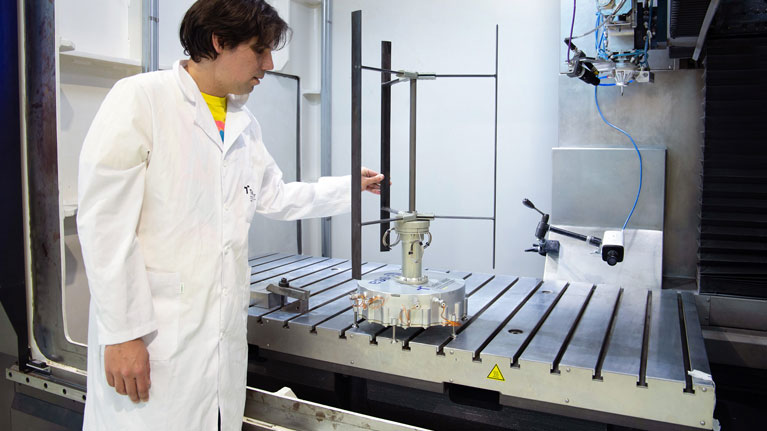Transforming wind on Mars into electric power to facilitate space explorations
The Tekniker technology centre has designed, built and validated a prototype of a wind turbine for the European Space Agency (ESA) specifically made to withstand environmental conditions on the red planet.

Can wind on Mars be transformed into electric power? To answer this question the Tekniker technology centre, a member of the Basque Research and Technology Alliance (BRTA), has designed and built a wind turbine generator for the European Space Agency (ESA) that can withstand environmental conditions on Mars and supply the energy that future space missions will require.
Development work for the project kicked off in 2021 within the framework of project HORACE funded by ESA and has been validated by an extensive range of testing campaigns carried out at Tekniker’s facilities in Eibar (Gipuzkoa) and at the wind tunnel in operation at Aarhus university (Denmark), a unique facility where it is possible to simulate the environmental conditions of Mars. More specifically, the turbine was subjected to wind gusts ranging between 26 and 16 m/s and an 8 – 16 millibar pressure, i.e., standard conditions on Mars.
The end result has produced a wind turbine with 15 KV of maximum electrostatic power to generate 31% more power in the Martian environment compared to the Earth’s atmosphere. It also operates between 50 and 432 rpm.
The unit has been equipped with a rotating and pressurised mechanism that allows the shaft to spin and with an ad hoc sealing element that keeps the dust out.
Borja Pozo, a researcher and the person in charge of the space unit at Tekniker explains that “having a constant and reliable power supply is not only crucial for space missions but can also ensure habitability in a place like Mars. The aim of this initiative is to make the most of the planet’s environment to transform the mechanical energy produced by wind into electricity and have a source of wind power available in addition to conventional solar panels”.
A promising technology for outer space
The technology centre’s team involved in this project has used a relatively new and promising technology known as triboelectric energy for operations in outer space.
Borja Pozo also explains that “conventional electromagnetic generators face certain constraints in terms of exploratory missions carried out on planets due to their high weight which greatly increases launching costs. As an alternative, we have studied triboelectric generators in this project that are lighter and smaller and allow missions to be carried out more efficiently and economically”.
As this technology uses friction to produce energy, it means that a number of advanced triboelectric materials with excellent tribological (low friction and wear resistance), mechanical (shock resistant), triboelectric (triboelectrification and interface conductivity) characteristics had to be developed and tested to deliver enough energy generation density under extreme conditions on Mars.
“The researcher points out that “we chose aluminium, a Diamond Like Carbon (DLC) coating and modified Teflon for the prototype due to their high power density and because they can be potentially used as lubricants and solid films in the Martian environment”.
Both the research work carried out by Tekniker as well as the knowhow associated with these coatings and materials have served to optimise turbine architecture and overcome constraints in terms of abrasion resistance, lubrication capacity, durability and aging. More than two million cycles of nominal operations have been reached with this first prototype.
ESA, therefore, now has the essential knowledge required to define an industrialisation roadmap that can be applied to this innovative power generation system.
As regards future actions once the HORACE project finishes (Triboelectric Energy Harvesting for Mars Exploration), design parameters will be optimised and new testing campaigns will be carried out to prove that the model is able to withstand environmental conditions on Mars.
